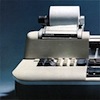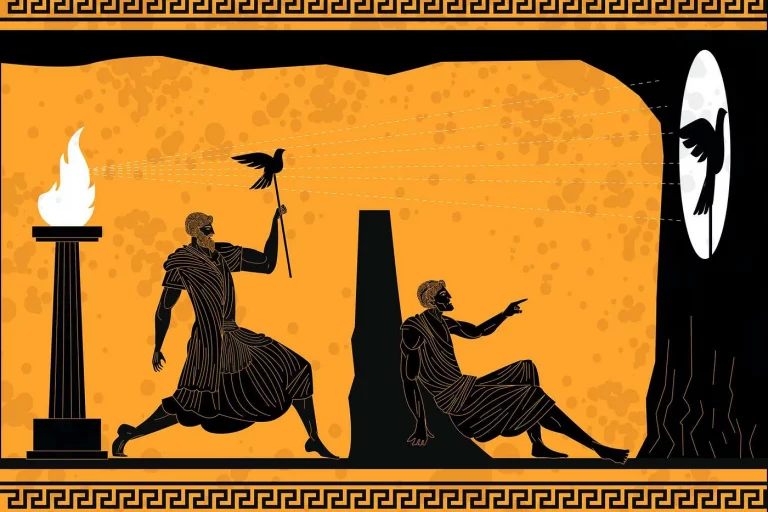Documentary highlights how Programma 101 put people first
Video reflections by Bruce Sterling, Massimo Banzi (of the Arduino), Mario Bellini and others are already online.
When Italian company Olivetti unveiled the Programma 101, it was more than just a technological revolution – it was a new way of thinking about people and computers. The compact, portable device revolutionised the idea of the computer, as well as how and where people really used them.
Instead of booking time on a monolithic machine guarded by experts, needing a whole room to house it, Programma 101 considered convenience, lifestyle and even aesthetics. Use it by the pool, or in the bath, convey the advertising images. It was perhaps the earliest example we have of user experience design in the computing field.
The 52 minute documentary recounting the story of this extraordinary machine and its makers will screen on Fox History Channel, Ur Sweden, SBS Australia, YLE Finland.
It describes the passage from a machine surrounded by men in “white coatsâ€, where using it was as intimidating as being in a hospital, to a device that could be carried around wherever you were. The idea was so unbelievable at the time, that when it was first unveiled, skeptical viewers looked for the underground cable that must connect it to a larger computer.
“The Programma 101 is a real break in the history of computers,†comments American science-fiction author Bruce Sterling in a clip from the documentary. “You went from the mainframe to a thing on the desktop.â€
A project that still resonates
For Experientia, the story has extra resonance, because not only is it an early example of thinking about the human side of human-computer interaction (putting people first, in other words!), but Experientia CEO Pierpaolo Perotto, is also the son of the Programma 101’s creator Pier Giorgio Perotto.
Recalling his father, Pierpaolo spoke about the three core elements – vision, planning and design – which helped his father and the small team of experts at Olivetti realise the Programma 101.
“They believed in a vision centred around people, and not around technology. My father was convinced that an electronic calculator could become a personal object. It was an act of courage. It was definitely completely counter-trend in terms of the culture surrounding technology in that moment in history. That vision characterised all the choices that followed.â€
This vision was implemented by a grand level of planning, which involved both new and existing technologies. These technologies were aimed not just at creating an experimental prototype, but one that could above all be mass-produced, for an affordable price. In all, about 44,000 units were sold, for about $3,200 each.
The final element of success for the project was the integration between vision, design and technology.
“Having had the courage and the will to insist on a product design that was integrated with the vision and the technological choices made, they refused proposals that, although aesthetically interesting, would have constrained the innovative nature of the machine,†says Pierpaolo. “In that sense, it was my father who gave the job, against the wishes of his superiors, to a young designer at the start of a luminous career: Mario Bellini.â€
The integration of these three elements – vision, planning and design – are also part of the way of thinking that eventually came to underpin Pierpaolo’s own work, particularly at Experientia, with its people-centred vision, and multi-disciplinary approach.
“I see these three elements as an instruction for anyone who wants to create a better future.â€
A lifestyle machine
The Programma 101’s innovative approach is easily seen in its advertising: a businessman uses the calculating machine by the pool, while a woman in a bathing suit smiles at him after her swim; a woman taps away at the keypad from the comfort of a bubble-filled bath.
In a clip from the documentary, Bruce Sterling laughingly comments:
“In that advertisement you see a businessman sitting at the side of a pool, with a woman in a bathing suit, doing a little calculation. It’s a prophecy of the death of computers as something hidden away behind glass walls.â€
While these images were no doubt slightly tongue-in-cheek, and seem charmingly quaint compared to the advertising images that surround us today, they are nevertheless the precursor of today’s computer as a personal assistant, and even a life partner. Pier Giorgio Perotto was able to envision a world where technology could exist in harmony with our lifestyles, which for the time was revolutionary.
Perhaps this vision comes through most clearly in the words of the father of personal computing himself. Commenting on the project later in life, Pier Giorgio Perotto said:
“I dreamed of a friendly machine, to which one could delegate all those operations that cause mental fatigue and errors; a machine that could learn, and calmly perform; that could store simple and intuitive data and instructions; that everyone could use; that cost little and fit with the dimensions of other office products that people were used to. I had to create a new language, which didn’t need interpreters in white coats.â€
Perhaps this idea of a new language between people and computers, one that is simple and intuitive, and accessible to everyone, is the real inheritance of Programma 101. Pier Giorgio Perotto created a world in which you didn’t need to be an expert to operate a computer, and nearly fifty years on, his vision has been realised in ways that no one expected. In a world where technology is developing so rapidly, the challenge is to stay true to that vision, and make sure that new devices are designed with the vision of putting people first, and remembering that human-computer interaction should be designed above all for the humans.




